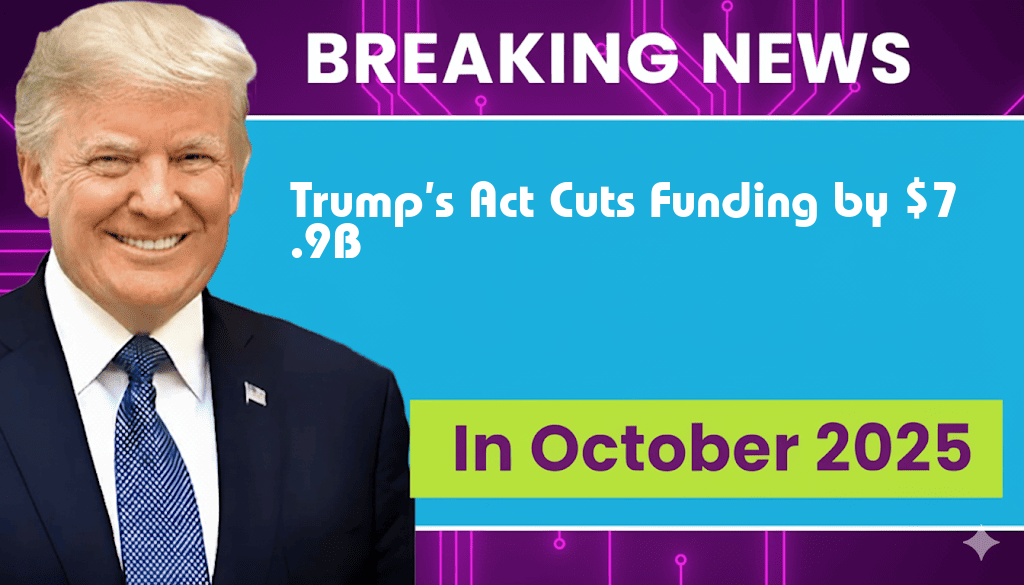In a significant move that has drawn both praise and criticism, former President Donald Trump has enacted the Rescissions Act, which aims to reduce federal funding by approximately $7.9 billion. This legislation targets various programs and initiatives across multiple sectors, reflecting the administration’s ongoing commitment to fiscal austerity. The act was signed into law amid ongoing debates regarding budget management and government spending priorities, particularly as the nation grapples with economic challenges. Supporters argue that the cuts are necessary to control federal spending and eliminate waste, while opponents warn that the reductions could have detrimental impacts on essential services and programs. As the implications of this act unfold, various stakeholders, including lawmakers, advocacy groups, and the public, are closely monitoring its effects on both local and national levels.
Key Components of the Rescissions Act
The Rescissions Act encompasses a range of funding cuts that affect different areas of public spending. The primary focus is on discretionary spending, which is subject to annual appropriations by Congress. Below is a summary of some of the key components:
- Education Funding: Significant cuts are proposed for various education programs, including federal grants and state education funding.
- Public Health Initiatives: Funding for public health campaigns and programs aimed at combating diseases has been reduced, raising concerns among health advocates.
- Environmental Programs: Several initiatives aimed at environmental protection and conservation are facing substantial budget reductions.
- Infrastructure Projects: Funding for infrastructure development, including roads and public transit, has also been impacted by the act.
Political Reactions
The enactment of the Rescissions Act has elicited diverse reactions from political leaders and organizations. Many Republicans have lauded the move as a step toward responsible governance, emphasizing the need to rein in federal spending.
Support from Conservative Circles
Conservative lawmakers and fiscal hawks have expressed strong support for the act, arguing that it reflects the principles of limited government and fiscal responsibility. Representative Jim Jordan, a vocal supporter of the legislation, stated, “Cutting unnecessary government spending is essential for ensuring economic growth and stability.”
Opposition from Democrats and Advocacy Groups
Conversely, Democrats and numerous advocacy groups have criticized the act, suggesting that it undermines important social programs. Senator Elizabeth Warren voiced her concerns, stating, “These cuts will hurt millions of Americans who rely on federal programs for education, healthcare, and basic support.” Several advocacy organizations have launched campaigns to mobilize public opposition against the funding reductions.
Potential Impacts on Key Programs
The ramifications of the Rescissions Act could be far-reaching, particularly in crucial sectors such as education and public health. Here are some potential impacts:
| Program | Estimated Funding Reduction | Potential Consequences |
|---|---|---|
| Federal Education Grants | $2 billion | Reduced resources for schools, leading to larger class sizes and fewer educational materials. |
| Public Health Campaigns | $1.5 billion | Potential rise in preventable diseases due to reduced health outreach and vaccination initiatives. |
| Environmental Protections | $1 billion | Increased risk of environmental degradation and diminished conservation efforts. |
| Infrastructure Development | $3.4 billion | Delays in critical infrastructure projects, impacting transportation and public safety. |
Looking Ahead
The full effects of the Rescissions Act will likely unfold over the coming months as various agencies adjust to the new financial landscape. Lawmakers and stakeholders will need to navigate the complex repercussions of these funding cuts, balancing the need for fiscal responsibility with the necessity of maintaining essential services. As debates continue, the Rescissions Act serves as a pivotal moment in the ongoing conversation about government spending and budget priorities.
For further information on the implications of the Rescissions Act, you can visit Forbes or read more on Wikipedia.
Frequently Asked Questions
What is the Trump’s Rescissions Act?
The Trump’s Rescissions Act is a legislative proposal aimed at reducing federal spending by rescinding previously allocated funds, amounting to a total of $7.9 billion.
How does the Rescissions Act impact federal funding?
The Rescissions Act significantly impacts federal funding by cutting $7.9 billion from various programs and agencies, which may affect their operations and the services they provide.
What programs are affected by the $7.9 billion cuts?
The specific programs affected by the $7.9 billion cuts include a range of federal initiatives, although the exact details may vary based on the final implementation of the Rescissions Act.
Who supports the Rescissions Act?
Support for the Rescissions Act primarily comes from fiscal conservatives and those advocating for reduced government spending, who believe it is necessary to address the national debt.
What are the potential consequences of the Rescissions Act?
The potential consequences of the Rescissions Act include reduced funding for essential services, potential layoffs in affected agencies, and backlash from various stakeholders who rely on federal funding.



